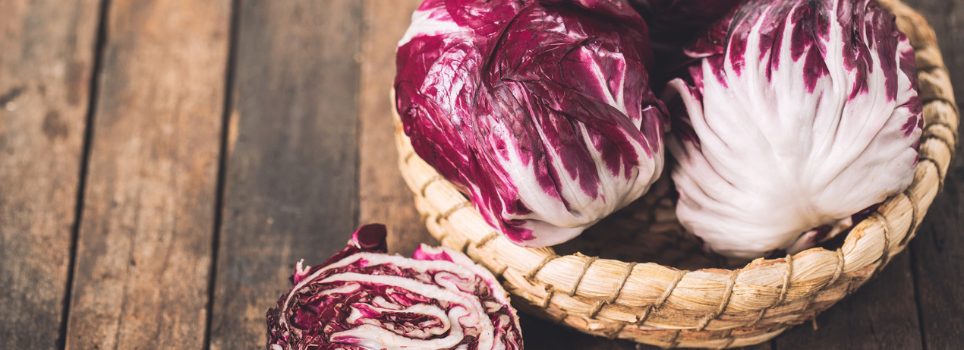Radicchio stands out among autumn vegetables due to its abundant beneficial properties essential for a well-rounded diet. This versatile vegetable comes in various delightful varieties, each possessing unique characteristics and properties worth exploring.
What Is Radicchio?
Radicchio is a chicory family member with both wild and cultivated types available. It can be categorized into two major groups based on leaf color:
- Deep red
- Variegated
In Europe, it is primarily cultivated in:
- France
- Spain
- Italy
Italy boasts popular varieties like the red Trevisano radicchio, also known as “La Trevisana,” as well as the red radicchio from Chioggia and Verona. Radicchio’s flavor can range from bitter to sweet, and its leaves can be long, green, or deep red.
In the culinary realm, radicchio shines for its versatility. Radicchio brings a unique touch, whether baked, sautéed, grilled, or added to salads, soups, or risottos.
What Are the Beneficial Effects of Radicchio?
The beneficial effects of Red Radicchio are obtained from its unique composition and variety. This remarkable vegetable is primarily composed of the following:
- 94% water
- 6% fiber
- Potassium
- Magnesium
- Iron
- Zinc
- Copper
- Calcium
- Phosphorus
- Sodium
Additionally, it contains a substantial amount of:
- Vitamin C
- Vitamin A
- B vitamins
Radicchio also contains soluble sugars and antioxidant substances such as polyphenols, with the red variety being particularly rich in anthocyanins.
The properties of radicchio encompass the following:
- Depurative and diuretic. Given its high water content, radicchio aids in cleansing the body of toxins and supports liver functions;
- Digestive. The presence of bitter substances stimulates gastric juices and bile secretion, promoting healthy digestion;
- Laxative. Radicchio contributes to the regulation of intestinal activity through its cellulose content;
- Sedative. It contains tryptophan, which helps counter sleep disorders, promoting relaxation;
- Antioxidant. Radicchio’s antioxidant compounds combat oxidative stress and promote overall health.
Furthermore, radicchio’s low-calorie content and dietary fiber make it an excellent ally in low-calorie diets by enhancing satiety.
The benefits of this vegetable extend beyond these properties. Radicchio is particularly recommended for individuals with psoriasis.
Its high fiber content helps modulate sugars and fats, creating a gel-like substance that slows down the absorption of these substances into the bloodstream. As a result, it is especially beneficial for those with diabetes and hypercholesterolemia.
The prebiotic fibers in radicchio also nourish the intestinal bacterial flora, contributing to gut health. Additionally, radicchio supports bone metabolism thanks to calcium, iron, and vitamin K, which play a significant role in bone formation and strength.
Anti-Aging Radicchio: Preserving Youthful Vitality
One of the most renowned virtues of Red Radicchio is its exceptional ability to prevent premature aging, making it a powerful ally in the fight against fine lines and wrinkles.
This remarkable property is attributed to key components such as vitamin C, polyphenols, and anthocyanins, with the red variety being particularly rich in these compounds. These antioxidants play a crucial role in safeguarding cells from the detrimental effects of free radicals.
The remarkable pigments in radicchio, including anthocyanins, have highly antioxidant properties that protect blood vessels.
Furthermore, radicchio contains polyphenols and phytosterols, which aid in the control of blood cholesterol levels.
-
3,400 Physicians
-
110,400 Annual surgeries
-
190,400 Annual Inpatient Admissions
-
928,000 Patients


